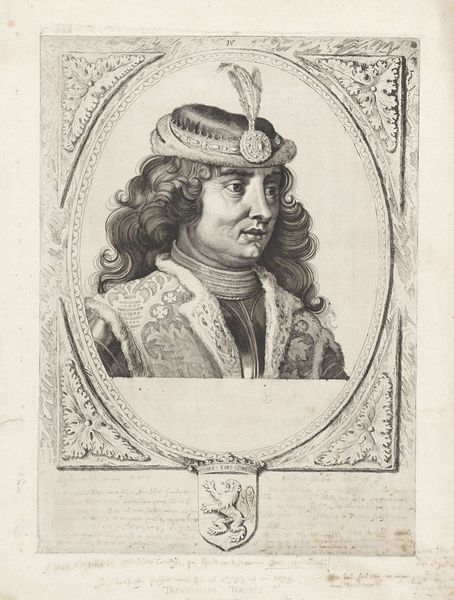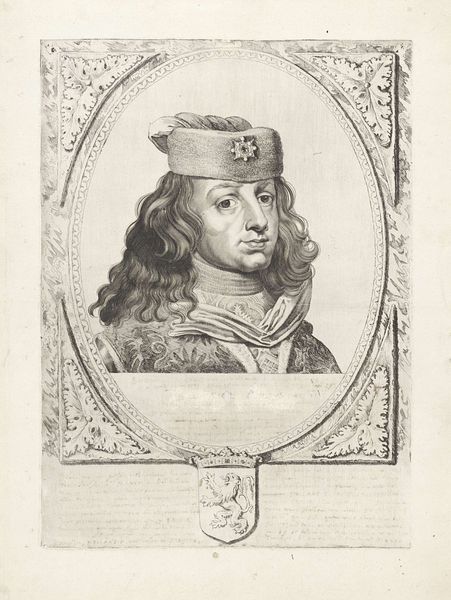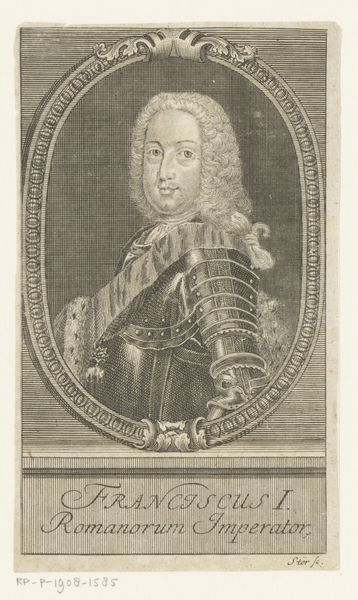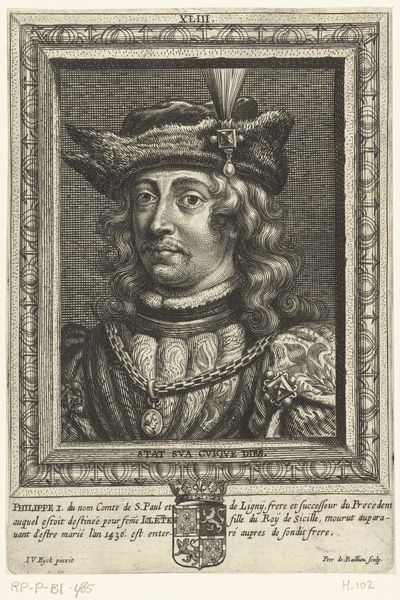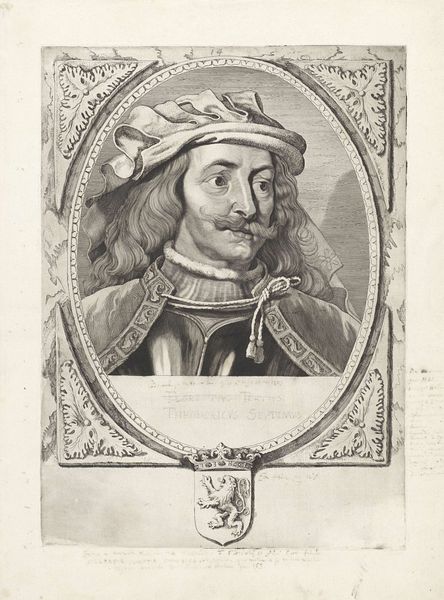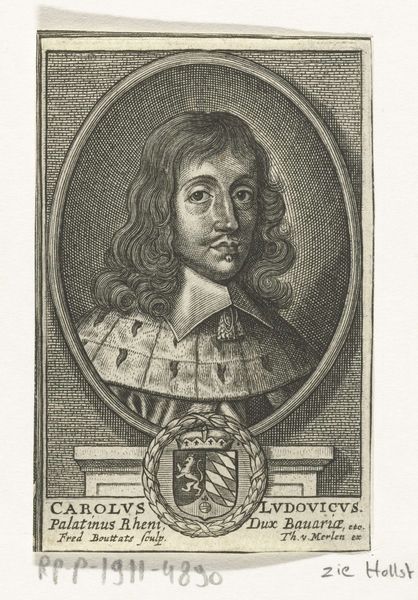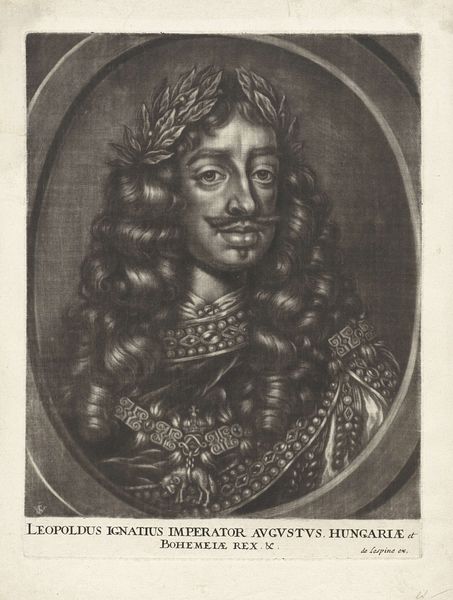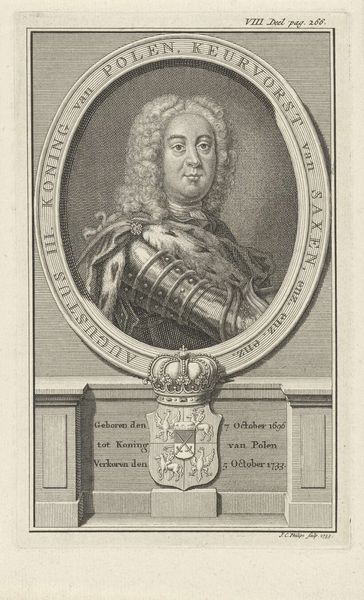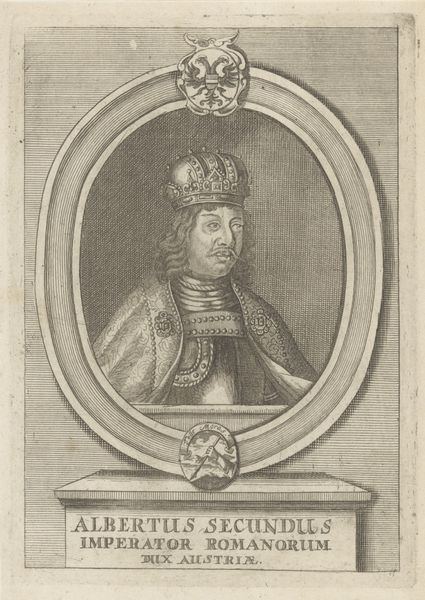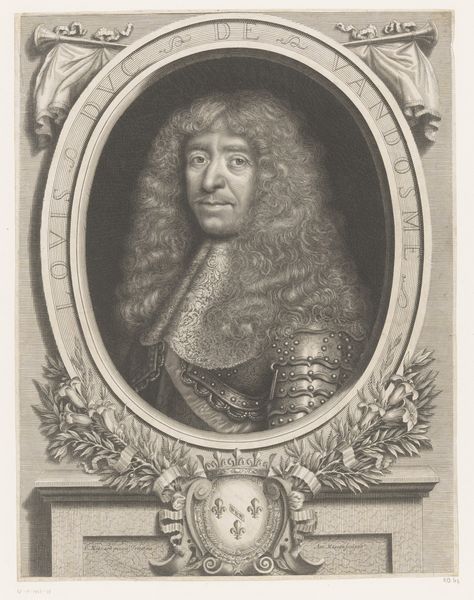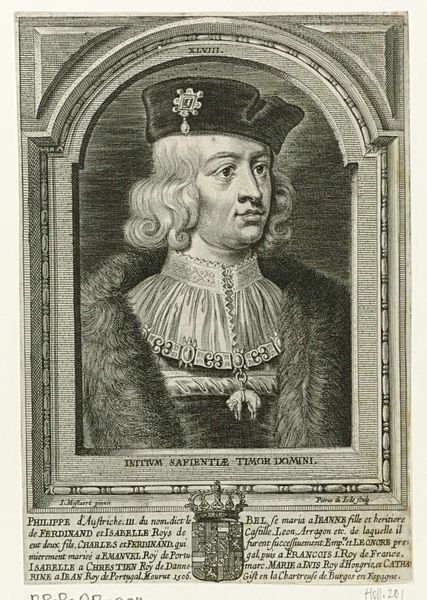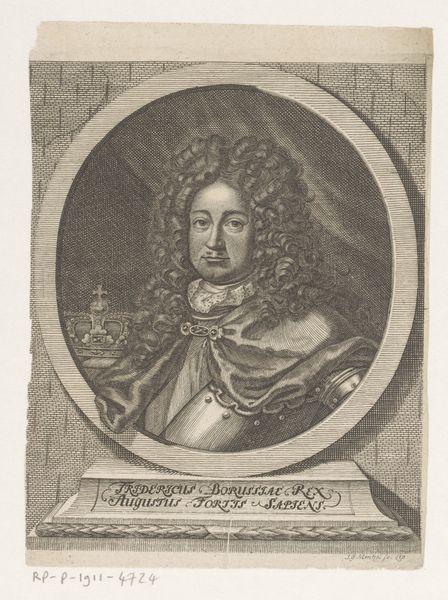
print, graphite, engraving
#
portrait
#
baroque
# print
#
old engraving style
#
pencil drawing
#
graphite
#
graphite
#
engraving
Dimensions: height 403 mm, width 294 mm
Copyright: Rijks Museum: Open Domain
Cornelis Visscher created this portrait of Floris II, Count of Holland using engraving, a printmaking technique, sometime in the mid-17th century. Engraving is a labor-intensive process. The artist uses a tool called a burin to carve lines directly into a metal plate, usually copper. Ink is then applied to the plate, filling the etched lines, and the surface is wiped clean. Finally, the plate is pressed onto paper, transferring the ink and creating the print. In this portrait, the precise lines of the engraving capture the textures and details of Floris II’s garments and facial features. The controlled nature of the medium lends the image a formal, almost stoic quality, befitting a royal subject. The very act of engraving, with its demand for meticulous skill, mirrors the hierarchical nature of the society it depicts. The labor of the artist serves to reinforce the status of the noble. Considering the materials, making, and context gives us a richer understanding of this portrait. It challenges our ideas about craft and fine art, and offers insight into the social and political meanings embedded within the artwork.
Comments
No comments
Be the first to comment and join the conversation on the ultimate creative platform.
